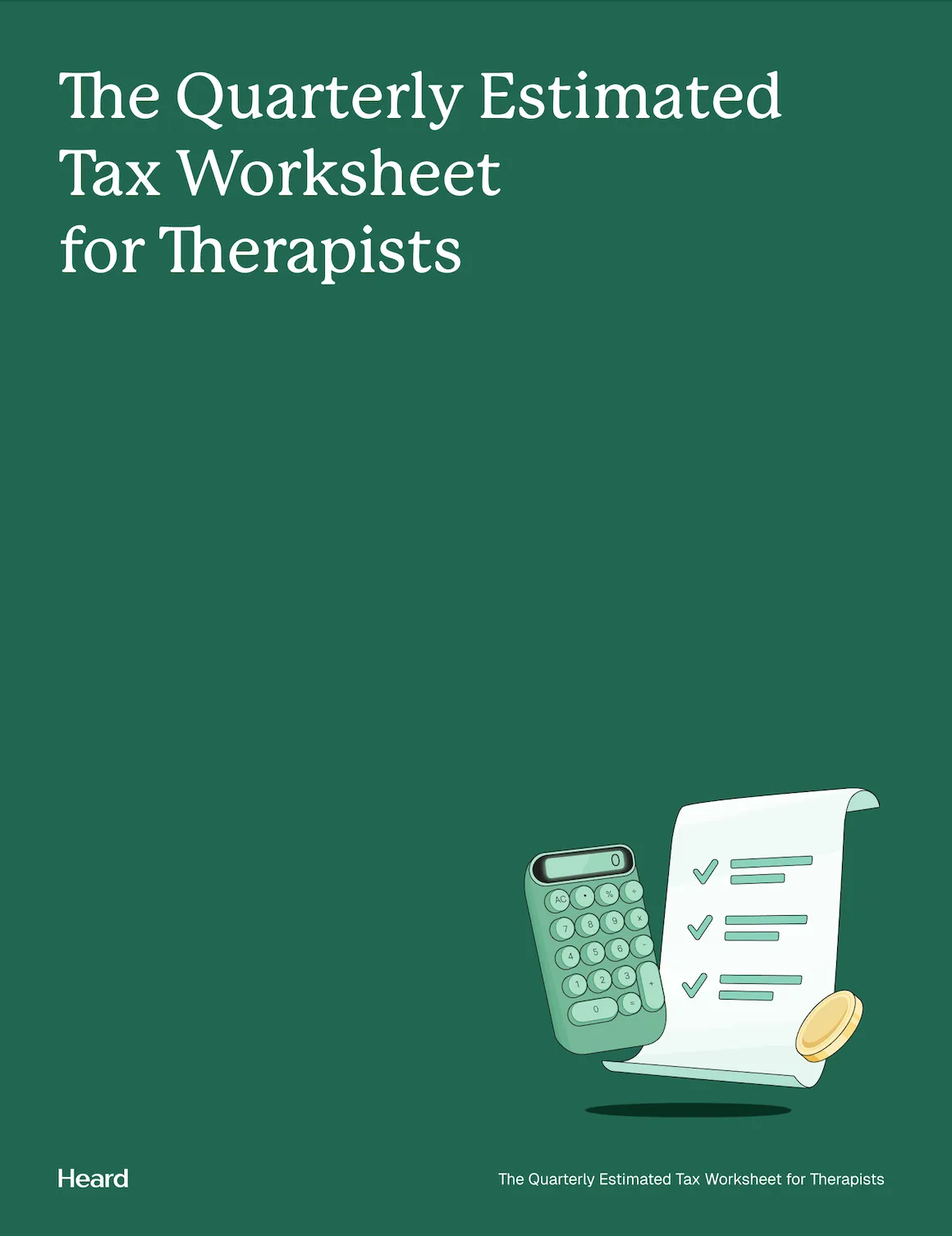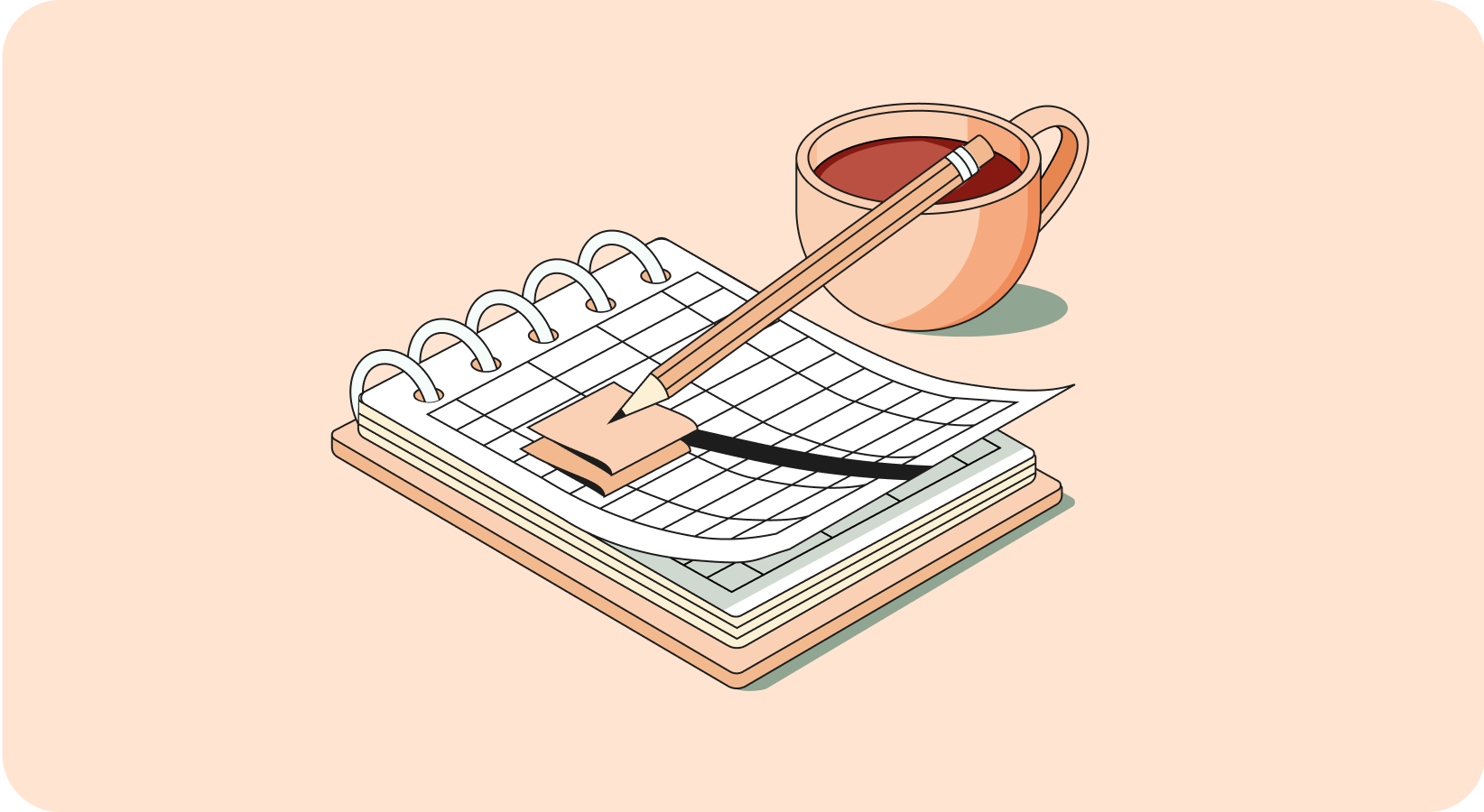If your therapy practice has a quarterly tax deadline coming up and you can’t afford to pay, don’t panic.
While you may be penalized by the IRS, there are steps you can take immediately to pay less.
But first, a quick refresher on quarterly estimated taxes.
{{resource}}
Who needs to pay quarterly taxes?
If your therapy practice will owe more than $1,000 in taxes this year, you’re required to estimate the total amount you’ll owe and pay it in quarterly installments. The limit is $500 in taxes owing if your therapy practice is a corporation.
Estimating your quarterly tax payments is less complicated than it sounds. In fact, if you have a copy of your therapy practice’s tax return from last year, you can base your estimates on it.
Our guide to quarterly estimated taxes for therapy practices gives you the full rundown.
When are quarterly estimated tax payments for therapy practices due?
Your quarterly payments for the current tax year are due:
- Q1: April 15
- Q2: June 15
- Q3: September 15
- Q4: January 15
The due date falls on the 15th of the month in question, unless the 15th happens to be a weekend or a national holiday. In that case, the deadline moves ahead to the next available day. For example, if June 15th falls on a Saturday, the deadline changes to June 17th, a Monday.
Don’t let the deadline for the fourth quarter of the year confuse you. You will pay estimated taxes for the last quarter of the year prior on January 15th—after the year comes to an end. The first tax payment for the new year is due April 15th.
{{resource}}
What does the IRS do if you don’t make your quarterly estimated payment?
The IRS will penalize you if:
- You fail to make a quarterly tax payment
- You make your quarterly tax payment late
- You pay less than you owe
In all of the above cases, you’ll be charged a penalty, the value of which is determined based on how much you fail to pay. You can expect to be penalized less if you pay a portion of the amount you owe, rather than none at all.
How does the IRS calculate quarterly tax penalties?
It’s a bit tricky calculating exactly how much you’ll owe the IRS if you fail to pay (or only pay a portion of) the quarterly tax you owe them.
To do so, you’ll need to download IRS Form 2210. It changes every year. Make sure you have the Form 2210 that’s right for your current tax year.
Typically, you don’t need to file Form 2210—you can just use it as a worksheet to calculate how much you owe.
Form 2210 lists the penalty rates for the current tax year. For 2022, the penalty rates are:
- Q1 (January to March): 3% of unpaid estimated taxes
- Q2 (April to June): 4% of unpaid estimated taxes
- Q3 (July to September): 5% of unpaid estimated taxes
- Q4 (October to December): 6% of unpaid estimated taxes
Example: You pay your taxes in full for Q1, but in Q2 you underpay. You owe an estimated $6,000 in taxes, but only pay $4,000. As a result, you owe the IRS $2,000, plus a 4% penalty ($80), for a total of $2,080 outstanding.
Calculating how much you owe gets trickier when you underpay (or fail to pay) in multiple quarters, with multiple penalty rates. You can try to muddle through IRS Form 2210 on your own. If you’re using tax software, it will also take a stab at finding the right amount.
The most accurate way to calculate your penalty is to get help from an accountant or the tax professionals at Heard. However, at the end of the day, it is the IRS that determines the final penalty amount.
Not only will they help you figure out how much you owe, they may be able to advise you on creating a budget that takes into account the penalty and helps you pay your tax bill ASAP.
{{resource}}
What to do when you can’t pay your quarterly taxes
Even with the most careful budgeting, unforeseen circumstances may cause you to come up short when it’s time to pay your estimated taxes.
When it comes to your entire tax bill for the year, the IRS offers a number of options for paying in installments or even negotiating a lower fee. You can learn more from our article on IRS penalties for therapists.
But when it comes to quarterly installments, these options aren’t available. All you can really do is pay as much of what you owe as possible, as soon as possible.
Not only will doing so reduce the amount you owe in penalties, but it will send a message to the IRS that you are doing your best to comply with their requirements, even if your financial situation is preventing you from doing so completely.
This may weigh in your benefit during feature dealings with the IRS—for instance, if you need to negotiate an installment plan to pay your taxes later on.
How you may avoid paying quarterly estimated tax penalties
Penalties for late or underpaid quarterly taxes are waived if, by the end of the year, you have paid:
- 90% of the total taxes (before credits) you owe
- 100% of what you paid in taxes last year (before credits)
{{resource}}
How to make sure you can pay quarterly taxes for your therapy practice
If you’ve run into problems making your quarterly tax payments, here are some steps you can take to make sure it doesn’t happen again.
Build a better budget
Effective budgeting means taking a comprehensive, realistic look at how your therapy practice can expect to spend and earn money in the future. That means you’re less likely to suffer unexpected shortfalls of cash.
Learn more from Heard’s article on how to build a budget for your therapy practice.
Set up a bookkeeping system that works
When you have a functional, up-to-date bookkeeping system—whether one you handle yourself, or one you outsource to a bookkeeper—you always have accurate data on how your business is performing. You also get access to financial statements that help you estimate and plan your quarterly taxes.
Learn how to choose accounting software for your therapy practice.
Get help from an accountant
Hiring an accountant or working with the professionals at Heard guarantees you get input about your finances from an informed, sympathetic third party. An accountant can help you plan strategies to budget for your tax bill and withhold income to cover your quarterly taxes.
Check out our guide to hiring an accountant for your therapy practice.
—
Looking for a refresher on quarterly tax payments? Our article on quarterly estimated tax payments for therapists has you covered.
This post is to be used for informational purposes only and does not constitute legal, business, or tax advice. Each person should consult his or her own attorney, business advisor, or tax advisor with respect to matters referenced in this post.
Mizanur Rahman is a Senior Accountant at Heard, where he helps therapists with accounting, bookkeeping, and taxes.
{{cta}}
Manage your bookkeeping, taxes, and payroll—all in one place.

Discover more. Get our newsletter.
Get free articles, guides, and tools developed by our experts to help you understand and manage your private practice finances.
Every quarter, Heard reviews the financial health of your practice, discusses any recommendations, and reminds you of upcoming estimated tax payments. Schedule a free consult to learn more.
Schedule a free consult



